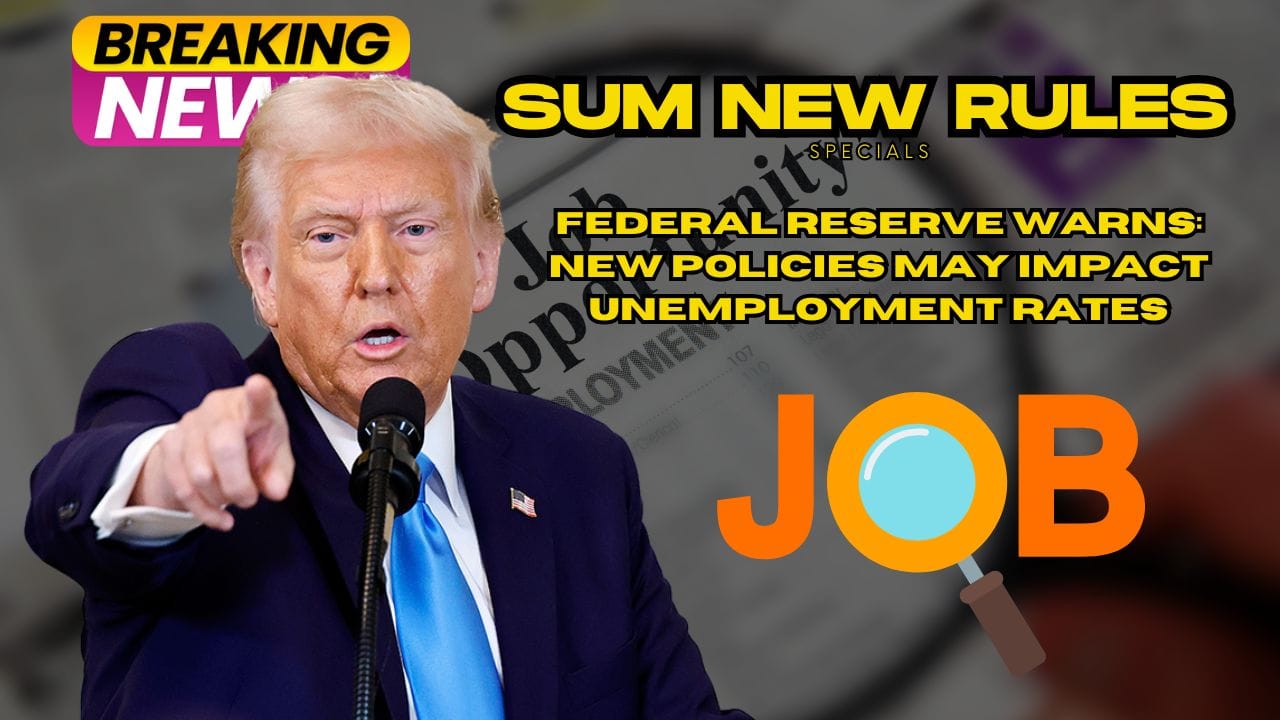The Federal Reserve is sounding the alarm: new policies might mess with unemployment rates and slow down job growth in big industries. This article dives into what’s worrying the Fed, the latest job market trends, and smart tips for workers and businesses to stay ahead. Get the scoop and gear up for changes that could hit hiring and jobs near you!
Federal Reserve Says: Watch Out for Job Changes
The Federal Reserve just dropped a warning – new policies could bump up unemployment in the U.S. With interest rates shifting, government rules changing, and money plans in flux, experts are nervous about wobbly job markets. The Fed’s careful tone is a heads-up for everyone to stay sharp and ready for what’s coming.
Here’s what’s got them worried, how it might affect jobs, and what you can do about it.
What’s Stirring Trouble?
The Fed’s moves control things like inflation, interest rates, and jobs. Lately, stuff like rate hikes and new government plans are making them think twice about job stability. Here’s the breakdown:
1. Interest Rates and Jobs
When the Fed raises interest rates, borrowing cash gets pricier. That can lead to:
- Less Growth: Businesses hold off on hiring or expanding.
- Tough Loans: Small companies struggle to pay debts, cutting jobs.
- Less Spending: People buy less, slowing down retail and service jobs.
Lower rates? That’s when businesses borrow more and hire faster.
2. Government Moves Hit the Workforce
New policies – like tariffs, tax changes, or spending cuts – can shake things up:
- Government Jobs: Less spending might mean fewer public sector gigs.
- Manufacturing: Tariffs could mess with jobs tied to trade.
- Tech and Money Sectors: Rules on investing might slow hiring.
- Real Estate: Higher rates could cool off house-building jobs.
3. Which Jobs Are at Risk?
Some industries might feel the pinch more:
- Retail & Restaurants: Less cash to spend means fewer hires.
- Healthcare: Budget cuts could hit hospital jobs.
- Energy: New rules on oil or green energy might shift jobs around.
What’s Happening with Jobs Right Now?
The latest numbers from the U.S. Bureau of Labor Statistics (BLS) show:
- Unemployment climbed to 4.1% in February 2025, up from 3.9% in December 2024.
- Only 151,000 new jobs popped up – less than experts hoped.
- Retail and hospitality took the biggest hit on hiring.
Check real-time updates at the BLS website!
What Can You Do?
For Workers
- Learn New Skills: Pick up tech, finance, or healthcare tricks to stay in demand.
- Extra Cash: Try freelancing or online side hustles.
- Stay in the Loop: Watch job trends and economic news.
- Safe Jobs: Healthcare, cybersecurity, and teaching usually hold strong.
- Make Friends: Network with pros in steady fields.
For Businesses
- Rethink Hiring: Plan for a bumpier economy.
- Cut Smart: Run lean without slashing tons of jobs.
- Roll with Changes: Talk to money experts about rates and rules.
- Train Your Team: Help workers learn skills that fit the future.
- Mix It Up: Add new products or markets to stay tough.
What Experts Are Saying
Big brains at places like the Federal Reserve Bank of New York say we might see a slower economy for the next year. Dr. Emily Carter from the Brookings Institution puts it like this:
“We’re not heading for a huge crash, but jobs could cool off. Workers and companies should get ready now to dodge the risks.”
Final Takeaways
- Workers: Brush up skills and keep options open.
- Businesses: Plan smart and stay flexible.
- Leaders: Keep inflation in check without tanking jobs.
The Fed’s warning isn’t a panic button – it’s a nudge to stay awake and adapt!
FAQs
- Why’s the Fed worried about jobs?
They track jobs and inflation together. Big job drops mean trouble they might need to fix. - How do rate hikes mess with hiring?
Higher rates make loans cost more, so businesses hire less. - Which jobs could get hit hardest?
Retail, manufacturing, real estate, and government jobs might feel it first. - What if I’m scared of losing my job?
Boost your skills, meet people, and look at steady fields like healthcare. - Does the Fed make jobs?
Not directly – they tweak rates and policies to help jobs grow or stay stable.






